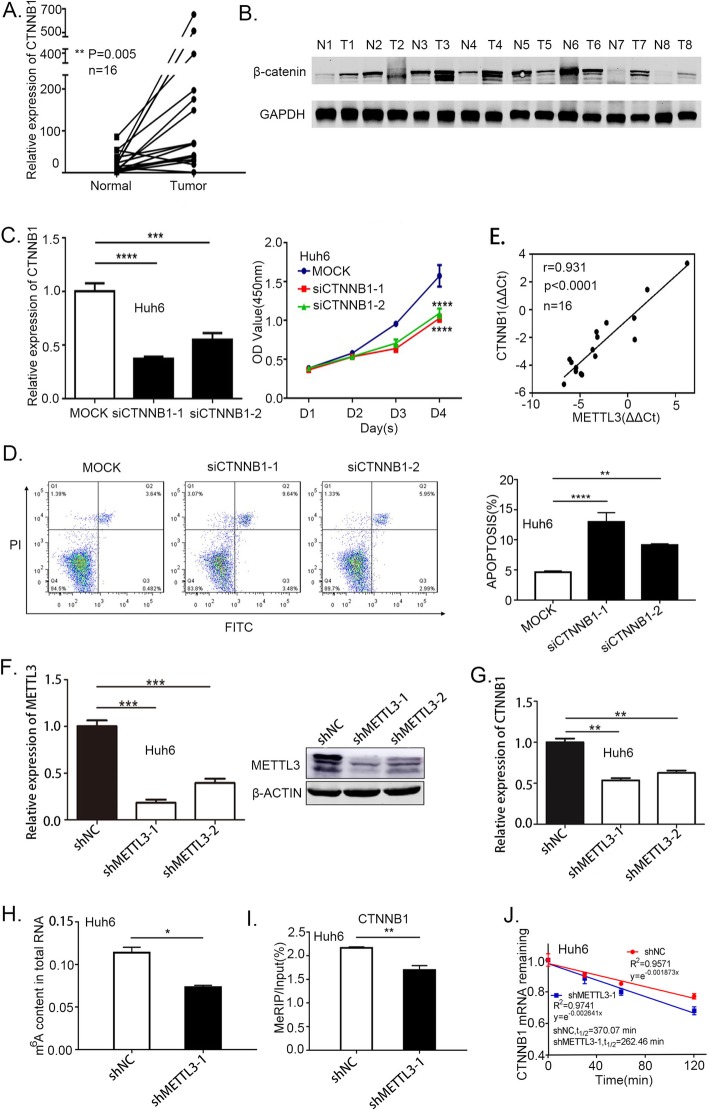Fig. 5.
Reduced m6A methylation reduced CTNNB1 expression and stability. a-b The relative mRNA expression and protein expression of CTNNB1/β-catenin in tumor and normal tissues (paired samples t-test). c The viability of CTNNB1 knockdown in Huh6 cells measured by CCK8 assay (one-way analysis of variance, Dunnett’s test). d The apoptosis rate in CTNNB1 knockdown in Huh6 cells were measured by FACS assays, histogram of flow cytometry assays from 3 independent experiments (one-way analysis of variance, Dunnett’s test) (e) Scatter plot showing the correlation between METTL3 and CTNNB1 expression. The linear best fit line is shown. The Pearson correlation coefficient (r) and p-value (P) obtained from two-tailed t-test of r = 0.931 are shown N = 16 tumor-normal pairs. f METTL3 stable knockdown in Huh6 cells were generated by lentiviral-based shRNA expression. METTL3 knockdown efficiency was confirmed at both the mRNA and protein levels by RT-qPCR and western blotting (one-way analysis of variance, Dunnett’s test). g CTNNB1 was quantified by RT-qPCR upon METTL3 depletion in Huh6 cells (one-way analysis of variance, Dunnett’s test). h Relative m6A level in knockdown METTL3 in Huh6 cells (independent-samples t-test). i m6A-IP combined with RT-qPCR was used to quantify the relative m6A modified level of CTNNB1 upon METTL3 depletion in Huh6 cells (independent-samples t test). j Lifespans of CTNNB1 expression in cells transfected with the reduction of METTL3 in Huh6 cells. Relative mRNA levels were quantified by RT-qPCR. *p-value< 0.05,**p-value< 0.01,***p-value< 0.001, ****p-value< 0.0001

